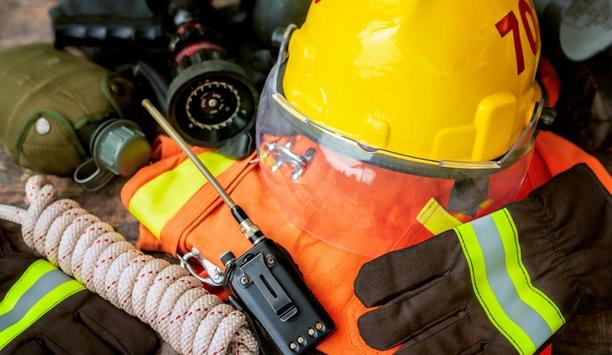Today’s firefighting and wildfire boots need to do more than just keep your feet dry, they need to keep you protected in many other ways. Firefighting boots have come a long way from those clunky rubber boots of old. Even though leather boots have been around for years, many fire departments opt to purchase rubber boots over leather boots. Many times, the decision frankly comes down to cost. While rubber boots are cheaper, cost should not be the only factor that comes into play.
Boot Weight
Leather firefighter boots are lighter in weight than their heavy, cumbersome rubber counterparts. Leather boots can be as much as 2-3 pounds lighter in weight than rubber boots, which can make a big difference when on your feet. Past research has indicated that every 1 pound of boot weight can be equivalent to an extra 5 pounds of weight on a firefighter’s back. The extra weight can lead to increased oxygen demands and slower physical response times.
HAIX® Fire Eagle Air is one of the lightest weight leather boots on the market averaging nearly 3 pounds lighter
The famous Delaware study comparing rubber to leather noted that the increased exertion of the firefighter when wearing rubber boots depleted the oxygen in the SCBA faster and led to a firefighter does legs have to work about 35.5% harder.
With all the weight that is already added between turnouts and SCBA’s, lighter weights in boots can help in lightening the load. The HAIX® Fire Eagle Air is one of the lightest weight leather boots on the market averaging nearly 3 pounds lighter than a rubber boot.
Boot Fit
Leather firefighter boots overall offer better fit and comfort than rubber boots. Leather boots can have a more anatomical fit, cradling the foot in the footbed, and preventing the foot from “slipping and sliding” around in the boot. Rubber boots can feel a bit “sloppy” and many times the heel can slide up and down in the back. Leather boots can offer ankle support where rubber boots cannot.
With leather, the boot shaft can be streamlined, and even elastic banding is added, to provide a snug fit in the ankle area that also flexes as one move. The HAIX® Fire Eagle Air or Fire Hero Xtreme each feature the Ankle Flex System which stabilizes the foot and supports the ankle while offering the flexibility needed for kneeling or operating machinery.
The added ankle support can prevent ankle and knee injuries by keeping the ankle more stable and in the best possible position. In addition, the larger heel platform on a leather boot offers more stability than rubber. One of the number one injuries to a firefighter, according to the latest NFPA report, was strains or sprains on the fireground.
Comfort
Firefighters must perform like athletes on the fire line and they need boots that can support them
The comfort of a leather boot over a rubber boot is pretty much a given. Leather breathes while rubber does not, which helps to keep the feet cooler. The feet can produce a lot of perspiration, especially when working hard, and wet feet in a fire boot can lead to blisters and potential steam burns.
Leather fire boots can feel more like an athletic shoe with an athletic fit. Firefighters must perform like athletes on the fire line and they need boots that can support them.
Decontamination
One of the biggest arguments supporting the purchase of rubber fire boots over leather fire boots is the issue of decontamination. It has been a long-held thought that rubber cleans and disinfects better than leather. In a study done by W.L. Gore, both leather and rubber fire boots were put through a standard decontamination procedure where they found that rubber boots retained a more significant amount of residual contaminants than leather boots.
With the recent focus on cancer in the fire service, decontamination has moved to the forefront of any fire gear program. There has been a cultural shift to having clean gear “as the new badge of honor”. Clean boots with fewer residuals present after decon can help to reduce potential exposures to the hazardous materials a firefighter can come in contact within the line of duty.
While the purchase of rubber boots might look good to the initial bottom line, the use of rubber could impact firefighter safety as well as their quality of work. With today’s modern leather firefighting boots, firefighters can do their job with less exertion, more comfort, and fewer injuries.















